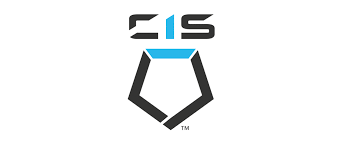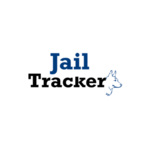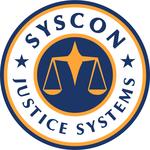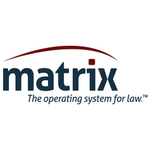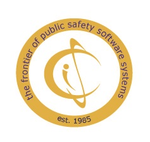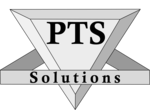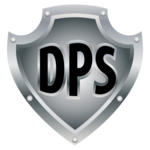What Is Jail Management Software?
Jail management software is a complete system built primarily to help correctional establishments optimize their daily operations. This robust program enables jail staff to effectively handle inmate data, scheduling, facility activity, and other tasks. It is a critical instrument in modern correctional facilities for ensuring the safety and security of both convicts and staff. At its core, jail management software functions as a centralized database for all inmate information.
This includes booking information, criminal history, medical records, and even visitation logs. With this information readily available, correctional officials may easily search for an inmate's profile, saving time and reducing errors. Another important feature of jail management software is its scheduling functionality. This includes overseeing inmates' housing assignments, court dates, and medical visits.
This software automates these operations, eliminating the need for manual scheduling, which can be error-prone and time-consuming. Jail administration software provides real-time updates and communication capabilities, allowing for efficient and secure contact among staff members. This guarantees that all relevant parties are informed and updated on essential information, such as inmate transfers or medical issues.
Security is critical in correctional facilities, and jail management software offers capabilities to improve it. This may entail monitoring inmate communication and detecting any suspect or banned activity, as well as tracking staff operations to maintain accountability. In addition to these essential features, many jail management software packages include customisable reporting and analytics tools. This enables administrators to monitor and analyze data on the inmate population, facility activity, and staff performance.
These insights can be used to discover areas for improvement and make data-driven decisions about the facility. Overall, prison management software is a crucial tool for correctional facilities seeking to streamline operations while maintaining a safe and secure environment. With its many features and configurable settings, it is an excellent choice for any facility wishing to modernize and enhance productivity.
What Are The Recent Trends In Jail Management Software?
Jail management software has evolved fast in recent years to address the increasing needs and problems of correctional facilities.
Here are some of the important themes that are now influencing the world of jail management software:
1. Cloud-Based Solutions: One of the most noticeable trends in jail administration software is the shift to cloud-based alternatives. These systems provide a number of advantages, including increased accessibility, scalability, and cost-effectiveness. Corrections facilities can use a cloud-based system to access data and control operations from any location as long as they have access to the internet.
2. Mobile Applications: The proliferation of mobile technology has had a huge impact on the jail management software business. Many software providers now provide mobile applications that allow prison officers and personnel to access critical information such as inmate lists, visitation schedules, and incident reports from their smartphones or tablets. This not only improves their efficiency, but it also increases the facility's safety and security.
3. Integration Of Biometric Technology: Many jail administration software solutions now include biometric integration to improve security and reduce the danger of fraudulent identification. This includes capabilities like facial recognition, fingerprint scanning, and iris recognition, all of which can be used to check in and identify inmates.
4. Advanced Data Analysis: Data analytics is becoming a more important function in jail administration software. Advanced algorithms and machine learning enable facilities to analyze massive volumes of data to find patterns, trends, and potential threats. This enables them to make data-driven decisions while increasing overall operational efficiency.
5. Inmate Communication: Modern jail administration software also addresses the requirement for efficient and secure communication between convicts, their families, and friends. Many software systems now include features like secure messaging, video visitation, and prepaid phoning, making it easier for inmates to stay in touch with their loved ones. Overall, jail administration software is getting more intuitive, technologically advanced, and integrated. Staying current with these trends allows corrections facilities to invest in a software solution that matches their specific demands and enhances their everyday operations.
Benefits Of Using Jail Management Software
Introduction: Jail management software is a crucial tool for correctional facilities, enabling efficient and secure management of inmates, staff, and facility operations. This software streamlines various processes, from intake and booking to scheduling and release, ensuring the smooth operation of a jail facility.
We will explore the numerous benefits of using jail management software and why it is an essential investment for correctional facilities.
1. Automated Data Management: One of the significant advantages of using jail management software is the automation of data management. Manual record-keeping is not only time-consuming but also prone to errors. With jail management software, all data, including inmate records, bookings, and schedules, are seamlessly recorded and stored electronically. This not only saves time but also ensures accurate and updated information.
2. Enhanced Security: Jail management software offers robust security measures to safeguard sensitive information and prevent unauthorized access. With features like role-based access control, encryption, and audit logs, administrators can control user access and track all data activity within the system. This ensures the integrity and confidentiality of all data, reducing the risk of security breaches.
3. Efficient Inmate Tracking: The ability to track inmates in real-time is a crucial aspect of jail management. Through the software's inmate tracking feature, administrators can monitor inmate movements, transfers, and releases. This streamlines the booking and release processes, reducing wait times and minimizing the risk of human error. Additionally, this feature also helps staff identify and address any security concerns promptly, ensuring the safety of all inmates and staff.
4. Simplified Scheduling: Scheduling inmate activities, staff shifts, and facility maintenance can be a daunting and time-consuming task. With jail management software, administrators can easily create and manage schedules, ensuring all required tasks and duties are appropriately assigned and completed. This not only saves time but also improves overall efficiency in the facility's operations.
5. Accurate Reporting: Jail management software offers comprehensive reporting features, allowing administrators to generate detailed reports on inmate statistics, facility operations, and staff performance. This data can be crucial in identifying areas for improvement and making informed decisions to enhance the facility's overall management.
6. Cost Savings: Investing in jail management software can lead to cost savings in the long run. With streamlined operations, reduced paperwork, and decreased errors, facilities can save time and resources, leading to cost savings. Additionally, automated processes also minimize staff workload, allowing them to focus on more critical tasks, leading to increased productivity.
Important Factors To Consider While Purchasing Jail Management Software?
When it comes to choosing Jail Management Software, there are various variables to consider before making the best option for your facility. Not all jail management software is made equal, and selecting the wrong one might have major implications for your operations.
To ensure the success of your purchase, you should keep the following points in mind:
1. Security And Compliance: One of the most important considerations when selecting jail management software is the level of security and compliance. As an institution responsible for the safety and well-being of inmates, it is critical that the software you select satisfies all relevant security standards and adheres to rules such as HIPAA and CJIS.
2. Customization And Flexibility: No two jails are alike, and your software should be able to fit your specific requirements and routines. Look for a system that is customizable and flexible to meet your individual needs. This ensures that your jail administration software is perfectly matched to your specific activities.
3. User-Friendly Interface: A user-friendly interface is critical to the seamless operation of any product, particularly in a high-stress situation like a jail. Make sure the software you purchase has a basic and intuitive user interface that your personnel can simply manage. This will save time and limit the possibility of error.
4. Integration With Existing Systems: Another crucial consideration is the jail management software's interoperability and integration with your current systems. It should be able to interact smoothly with your existing gear and software, minimizing disruptions to your operations.
5. Reporting And Analytics: Effective data management and reporting are critical for a well-run jail. Seek for software with advanced reporting and analytics features to obtain insights into your operations, find areas for improvement, and track success.
6. Training And Support: When choosing jail management software, it is critical to investigate the vendor's training and support options. Ensure that they provide comprehensive training for your employees to use the software efficiently. Additionally, ensure that they have a dependable support structure in place to solve any difficulties that may emerge.
7. Scalability: Your software should be able to expand and change as your facility does. Choose jail management software that can scale and adapt to your changing demands without requiring a full rebuild. Keeping these considerations in mind will help you make an informed selection when selecting jail management software for your facility. Prioritize security, customisation, user-friendliness, integration, reporting, training, and scalability to select a solution that meets your individual requirements and positions your facility for success.
What Are The Key Features To Look For In Jail Management Software?
When it comes to running a jail, having the correct software is essential. Jail administration software is a complete solution that allows correctional facilities to keep track of convicts, maintain their records, and streamline numerous activities. With so many alternatives available, it can be difficult for customers to know the vital features to seek for in jail management software.
To make an informed decision, here are some important characteristics to consider while selecting jail management software:
1. Inmate Management: This tool enables you to save and manage inmate information such as demographics, booking records, and current position within the facility. It should also allow for convenient tracking of inmate movements, transfers, and releases.
2. Case Management: Effective jail management software should have a case management feature that allows you to track and handle any judicial processes involving inmates. It should also give the required information and paperwork to assist with case investigations and court appearances.
3. Commissary And Trust Accounting: This feature facilitates the management of inmate cash, such as deposits, withdrawals, and commissary purchases. It should also generate thorough information about inmate account balances and transactions.
4. Visitation Management: This function allows you to arrange and manage prison visits, including establishing rules and limitations and recording visitor information and data. It should also support remote video visits, assuring the safety and convenience of both inmates and visitors.
5. Medical And Mental Health Management: A good jail management software should have modules for tracking and managing inmates' medical and mental health records. This function provides easy access to vital medical records and planned appointments.
6. Staff Management: The program should provide functions for managing and tracking employee schedules, leave requests, and performance assessments. It should also facilitate communication among staff members and provide real-time updates on incidents or emergencies.
7. Reporting And Analytics: A reputable jail management software should offer a variety of customizable and standardized reports on inmate population, incidents, and employee performance. It should also include analytics tools to assist you spot patterns and trends and make smarter decisions.
8. Security And Access Control: To maintain the confidentiality and security of sensitive information, the software should have stringent access controls such as role-based permissions and data encryption.
9. Integration And Compatibility: When choosing jail management software, evaluate how it will work with other systems, such as electronic health records and biometric identification systems. This will allow for seamless data sharing and streamline processes within the facility.
10. Training And Support: Finally, the software should include enough training and support to guarantee a smooth transition and effective use. Look for vendors who provide extensive training materials, user manuals, and 24-hour customer support.
Why Do Businesses Need Jail Management Software?
Businesses require jail management software for a variety of reasons. First and foremost, this software aids in the streamlining and automation of the complicated operations associated with correctional institution management. It enables effective admission, booking, and housing of inmates, as well as tracking medical data and coordinating visitor plans. Furthermore, jail management software includes comprehensive and reliable reporting capabilities, making it easier for managers to monitor and evaluate data on inmate population, mobility, and occurrences within the institution.
This information can help you make better judgments and run your facilities more effectively overall. Furthermore, this software contributes to a secure and safe environment for both convicts and staff. It contains features like inmate tracking, alarm systems, and communication tools to protect everyone's safety inside the facility.
Jail management software can also help with administrative chores like managing staff work schedules, maintaining employee attendance, and processing payroll. This can free up time and resources for the facility's administrative staff, allowing them to focus on other critical activities. Another advantage of adopting jail administration software is its compatibility with other systems, like as accounting and property management software.
This enables a smooth flow of data across departments and lowers the possibility of errors or anomalies. Overall, businesses require jail management software to increase productivity, improve safety and security, and simplify administrative work in correctional facilities. Businesses who invest in this software can improve the overall management of their facilities and provide a better environment for both convicts and workers.
How Much Time Is Required To Implement Jail Management Software?
The implementation time for jail management software is determined by a variety of factors, including the scale of the project, the complexity of the software, and the jail facility's readiness. On average, it can take between three months and a year to properly integrate jail administration software. The earliest steps of implementation, which include software installation and configuration, might take up to 4-6 weeks.
This includes establishing the hardware and software infrastructure, importing existing data, and modifying various parameters to meet the needs of the institution. After the software has been installed, staff members may require additional training and onboarding for 4-8 weeks. This guarantees that all users are skilled and comfortable utilizing the software to its fullest extent. The following phase entails testing and fine-tuning the software, which can take another 8-12 weeks.
This is an important stage for identifying any flaws or errors and making the required changes to ensure seamless functionality. The final stage is the go-live procedure, which normally lasts 2-4 weeks. During this stage, the program is officially released and used on a daily basis, with the software vendor providing continuous support and training.
Overall, it is critical to recognize that the adoption of jail management software is a difficult and time-consuming process that necessitates meticulous preparation and coordination. To guarantee a successful and timely implementation, correctional facilities must first establish a comprehensive understanding of their needs and expectations.
What Is The Level Of Customization Available In Jail Management Software?
Jail management software, often known as corrections management software, is a specialized system developed to assist correctional facilities in managing and monitoring inmate and detainee information, facility operations, and employee activities. One important element to consider when selecting jail management software is the level of flexibility provided. This refers to the software's ability to be adapted and configured based on the specific demands and operations of a given facility. There are various levels of customization accessible in jail management software, and it is critical to understand them before making the best option for your institution.
Here are some important aspects to consider:
1. User Interface Customization: While most jail management software ships with a pre-defined user interface, certain systems allow for customization to match the unique demands of individual users. This could include the option to change the layout, add or remove specific elements, and switch between color palettes. It can help to improve the user experience and make the system more accessible.
2. Data Fields And Forms: One of the primary advantages of jail management software is the capacity to collect and retain vast volumes of information about inmates, detainees, and personnel. The level of customisation available for data fields and forms varies greatly across systems. Some software may provide a standard set of fields, whereas others may allow for the creation of custom fields to track certain types of data.
3. Reporting And Analytics: Reporting and analytics are a crucial component of customization to consider. The ability to create customisable reports and dashboards is critical for monitoring and analyzing data, tracking key performance indicators, and detecting trends. Look for software that provides a wide range of reporting and analytics tools, as well as the opportunity to modify them to your facility's specific requirements.
4. Workflows And Procedures: Good jail management software should allow for the modification of workflows and procedures. This includes the ability to assign multiple user roles and access levels, automate tasks, and configure notifications and alerts depending on certain occurrences. This can assist enhance efficiency and keep operations running smoothly.
5. Integration: Finally, customization might relate to the software's capacity to interact with other systems and applications. This could include integrating with inmate telephone and video visitation systems, as well as financial management and medical records. The more flexible the integration possibilities, the easier it will be to incorporate the program into your existing procedures.
Which Industries Can Benefit The Most From Jail Management Software?
Jail management software is a specialist software system that streamlines and automates the operation of correctional facilities such as jails and prisons. With its extensive features and functionalities, this software can substantially help enterprises involved in the management and operation of correctional facilities.
Let's take a look at some of the industries that will gain the most from jail management software.
1. Law Enforcement And Correctional: Agencies Law enforcement and prisons organizations administer and operate correctional institutions, hence they are the principal users of jail management software. This program allows them to track inmate information, manage bookings and releases, arrange court appearances, and keep accurate records of inmates and staff. By streamlining these operations, jail management software can increase efficiency and minimize the workload of law enforcement and corrections officials.
2. Government Agencies: Jail management software can also help government agencies that manage and monitor correctional facilities, such as municipal and state agencies. This software allows them to assure compliance with state and federal standards, keep accurate records, and improve overall management of their correctional facilities. Furthermore, government organizations can benefit from jail management software's reporting and analytics features to make better decisions.
3. Private Prisons & Correctional Facilities: Private jails and correctional facilities have their own rules and procedures for handling convicts. Using jail management software, these facilities may assure compliance with these regulations, strengthen security measures, and retain accurate inmate records. Additionally, the software's functions for managing medical records and prescription distribution can assist private jails and correctional facilities in providing better healthcare to their inmates.
4. Healthcare Facilities: Inmates in correctional facilities require regular medical care, therefore healthcare services are an important aspect of jail management. Jail administration software can link with healthcare facilities' electronic health record (EHR) systems, allowing for the smooth transfer of inmate medical information. This can increase the quality of treatment provided to inmates while also ensuring that their medical needs are met sufficiently.
5. Court Systems And Legal Professionals: The court system and legal professionals play important roles in correctional facility management. Using jail management software, various stakeholders may readily access inmate information, schedules, and court appearances, streamlining the legal process. The software's court administration features can also help with case management and sentencing tracking.
Conclusion
After conducting extensive research and analysis on various jail management software, it is obvious that this category provides a diverse set of solutions to satisfy the needs of various correctional facilities. From small county jails to huge state prisons, there are alternatives for every level of operation. One of the most important elements to consider when selecting jail management software is its capacity to reduce processes and increase efficiency.
To maintain smooth operations, the software should successfully manage inmate records, scheduling, staff management, and interdepartmental communication. Security is also an important consideration. With sensitive information and rigorous restrictions, it is critical to select software that includes strong security features to protect data and prevent unwanted access.
Compatibility with other systems and integration capabilities are also important considerations. A decent jail management software should be compatible with existing systems and have an easy-to-use interface to increase productivity and eliminate manual tasks. Furthermore, analyze the vendor's track record and market repute. Look for software vendors with experience dealing with correctional facilities and a strong support system in case of technical difficulties.
Last but not least, budgeting is crucial in decision-making. It is critical to select software that fits your budget and offers value for money in terms of features and functionalities. To summarize, the right jail management software can significantly increase the overall efficiency and security of a correctional facility. Buyers can make an informed selection and select software that suits their individual requirements by taking into account elements such as process efficiency, security, compatibility, vendor reputation, and budget.


